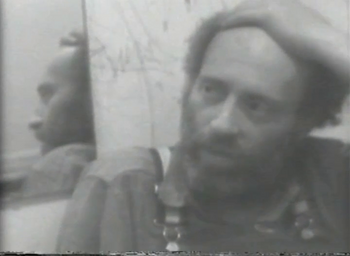Warren Brodey
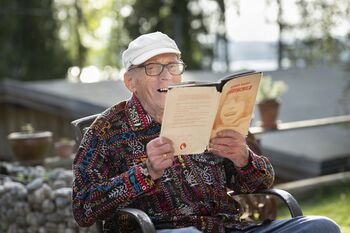 Warren Brodey, 2024. Photo: István Virág | |
| Born |
January 25, 1924 Toronto, Canada |
|---|---|
| Died |
August 10, 2025 (aged 101) Båstad, Norway |
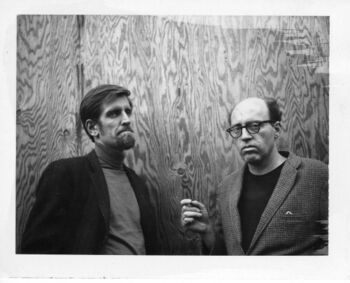
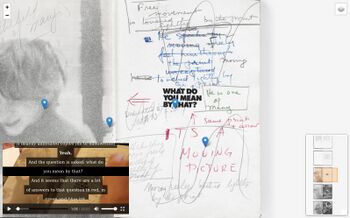
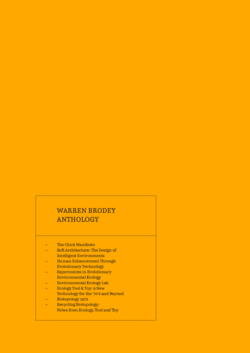
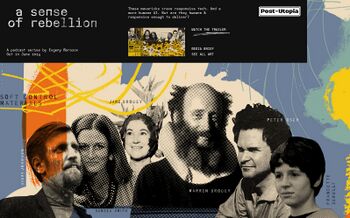
Warren Mortimer Brodey was a psychiatrist, cyberneticist and designer.
Warren Brodey was born in Toronto in 1924. He studied medicine at the University of Toronto and obtained his MD in 1947. After training as a psychiatrist in New York and Boston, Brodey became Assistant Director at the Child Guidance Center in Worcester, Massachussetts. Between 1956 and 1958, he worked as a researcher on Murray Bowen’s Family Study Project at the National Institute of Mental Health in Bethesda, Maryland. In the same period, he became an associate (and later a faculty member) at the Washington School of Psychiatry, where he began a clinical practice in family therapy after his engagement at the NIMH had ended. From 1959 to 1964, he was also a Clinical Professor at Georgetown University and, between 1960 and 1964, a candidate at the Washington Psychoanalytic Institute. Simultaneously, Brodey was a consultant to the Pilot School for the Blind in Washington, working with multi-handicapped blind children and their families. During those years he published several articles on family therapy and worked on two books that were later published as Changing the Family in 1968 (revised as Family Dance: Building Positive Relationships through Family Therapy, 1977) and Earthchild: Glories of the Asphyxiated Spectrum in 1974. In a letter to Gordon Pask dated 21 January 1964, he described his project in these works as that of adding “cybernetic general systems think to psychiatric observations.”
Brodey abandoned his psychiatric practice in 1964 to become a research affiliate in cybernetics at Massachusetts Institute of Technology (MIT) in Boston. Formally an unpaid affiliate with the Cognitive Information Processing Lab and informally a protégé of Warren McCulloch, Brodey initially funded his activities at MIT through work as a consultant for the Computer Research Lab at NASA’s Electronics Research Center in Cambridge. Later, he became director of the MIT Science Camp. Drawing on his experience of working with blind children, he took an interest in the enhancement of human sensory capabilities. In 1967, he coined the term “soft architecture” to denote the “design of intelligent environments.” Together with the computer engineer Avery R. Johnson (1932-1988), Brodey ran the Environmental Ecology Lab (EEL) from 1967 to 1969. Described by Johnson and Brodey as a “post-industrial” laboratory, the privately funded EEL, located in a former industrial building at Lewis Wharf in Boston, was a highly experimental attempt to develop “responsive environments” and new kinds of tactile and bodily interfaces. Between 1970 and 1972, Brodey and Johnson collaborated on the «upstart» Ecology Tool & Toy, which they ran from Johnson’s property, “the Quarry,” in Milford, New Hampshire. Their collaboration resulted in a patent for what they called “soft control materials.” Brodey developed his ecological thinking in dialogue with Gregory Bateson and published in Radical Software, the print organ of the video movement. In 1972, he emigrated to Norway. Here, he was a Visiting Scientist with the Department of Technical Cybernetics at the Technical University of Norway, Trondheim, before he, in 1977, took a job as a factory worker at the Jøtul foundry in Oslo. In 1980, he was a visiting lecturer at the Tianjin University in China, teaching cybernetics. In the following years, still living in Norway, he continued to devote himself to the development of tactile interfaces and was a regular contributor to the Norwegian magazine Flux (2000–2008).
The above is based on Brodey's own account in "Note to the archivist," Warren Brodey Archive, University of Vienna, and Evgeny Morozov's ‘A Bath of Continuous Sensations’: Warren Brodey’s Quest for Human Augmentation and Intelligent Environments, 1955-1975, PhD dissertation, Harvard University, 2018.
Books[edit]
- Changing the Family, New York: Clarkson N. Potter, 1968, 160 pp; rev. as Family Dance: Building Positive Relationships through Family Therapy, Garden City, NY: Anchor Press, 1977, xv+138 pp. The Anchor edition contains a new introduction and final chapter.
- Earthchild: Glories of the Asphyxiated Spectrum, New York: Gordon and Breach, 1974, 166 pp.
- with Institute for Computational Vandalism and Karin Nygård, Earthchild - A Time Journey, 2024.
- Anthology, comp. Karin Nygård and Ellef Prestsæter, Blaker: Guttormsgaards arkiv, 2024, [43] pp.
Papers, articles and other writings[edit]
- with Marjorie Hayden, "Intrateam Reactions: Their Relation to the Conflicts of the Family in Treatment", American Journal of Orthopsychiatry 27:2 (1957), 349-355. DOI.
- "Some Family Operations and Schizophrenia: A Study of Five Hospitalized Families Each with a Schizophrenic Member,", A.M.A. Archives of General Psychiatry (October 1959), 379-402.
- The Family as the Unit of Study and Treatment: Workshop, 1959: 3. "Image, Object and Narcissistic Relationships", American Journal of Orthopsychiatry 31: 1 (1961), 69–73. DOI.
- "Normal Developmental Learning and the Education of the Child Born Blind", Gifted Child Quarterly 6:4 (1962), 141-149. DOI.
- "On Family Therapy", Family Process 2:2 (September 1963), 280-287.
- "Sound and Space", Journal of the American Institute of Architects 42 (1964), 58-60.
- "On the Dynamics of Narcissism: I. Externalization and Early Ego Development", in The Psychoanalytic Study of the Child Vol. 20, New York: International Universities Press, 1965, 165-193.
- with Warren McCulloch, "The Biological Sciences", in The Great Ideas Today, Chicago: Encyclopedia Britannica, 1966, 288-334.
- "A Cybernetic Approach to Family Therapy", in Family Therapy and Disturbed Families, Palo Alto, CA: Science & Behavior Books, 1967.
- "The Clock Manifesto", Annals of the New York Academy of Sciences 138:1 (1967), 895-899.
- "Remarks by Warren Brodey", Press Kit for Press Conference for E.A.T., Experiments in Art and Technology, 1967.
- with Nilo Lindgren, "Human Enhancement through Evolutionary Technology", IEEE Spectrum 4:9 (September 1967), 87-97.
- "Soft Architecture: The Design of Intelligent Environments", Landscape 17:1 (Autumn 1967), 8-12, HTML.
- with Nilo Lindgren, "Human Enhancement: Beyond the Machine Age", IEEE Spectrum 5:2 (February 1968), 79-93.
- "Building a Creative Environment", Innovation 5 (1969), 2-9.
- "Warren Brodey describes how the blind, if asked, can teach us to experience the other-than-visual world", Architectural Design (January 1969), 9-10.
- "Environmental Ecology Lab", 1969, 4 pp, HTML.
- "Unlearning the Obsolescent", Architectural Design (September 1969), 483-484.
- "Experiments in Evolutionary Environmental Ecology", in Computer Graphics in Architecture and Design: Proceedings of the Yale Conference on Computer Graphics in Architecture, ed. Murray Milne, New Haven: Yale School of Art and Architecture, 1969, 89-96.
- "Information Exchange in the Time Domain," in General Systems Theory and Psychiatry, eds. William Gray, Frederick J. Duhl and Nicholas D. Rizzo, New York: Little, Brown, 1969, 229-243.
- "If You Can't Support the Revolution Let the Revolution Support You", Innovation 15 (October 1970), 12-22.
- with Avery R. Johnson, "Manifesto for Ecology, Tool & Toy: A New Technology for the '70s and Beyond", 1971, 5 pp, HTML.
- with Avery R. Johnson, "Experiments in Self-Learning: Closed Loop Simulation", in Visual Prosthesis: The Interdisciplinary Dialogue, eds. T.D. Sterling et. al., New York and London: Academic Press, 1971, 199-205.
- with Avery R. Johnson, "Soft Control Material", U.S. Patent 3,585,356 filed April 24, 1972; issued June 18, 1974.
- "Biotopology 1972", Radical Software 4 (Summer 1971), 4-7.
- with Gregory Bateson, "The Treaty of Kealakekua Bay," unpublished transcript of a dialog, Oceanic Institute, Hawaii, May 1972.
- "Recycling Biotopology 1972: Notes from Ecology, Tool & Toy", Radical Software 5 (May 1972), 34-36.
Interviews[edit]
- "I maskines bilde. Warren Brodey i samtale med Henrik B. Tschudi", Flux 14, 1997, repr. in Speilbilder av en større virkelighet: 17 samtaler om liv og død - og litt imellom, Flux, 2005, pp 125-132. (Norwegian)
- Warren Brodey. Interview with Catherine Rakow, Wednesday, September 4, 2002, The Murray Bowen Archives Project, 2016. Oral history. Audio with transcript.
- "Beyond the Wall". Interview with Karin Nygård and Ellef Prestsæter, MacGuffin no. 14, Autumn 2024, pp 179-200.
About Warren Brodey[edit]
- Nicholas Negroponte, The Architecture Machine, Cambridge, MA: MIT Press, 1970, passim.
- Nicholas Negroponte, "Aspects of Living in an Architecture Machine", in Nigel Cross (ed.), Design Participation: Proceedings of the Design Research Society Conference, 1971, London: Design Research Society, 1972, 63-67.
- Susan Rogers, "Ecology, Tool & Toy", Rags 13, 1971, pp 50-51, HTML.
- Nicholas Negroponte, Soft Architecture Machines, Cambridge, MA: MIT Press, 1975, passim. [1]
- Larry D. Busbea, "Soft Control Material: Environment and Design c. 1970", Journal of Design History 30:2, May 2017, pp 139-156, DOI; upd. as "Soft Control Material", in Busbea, The Responsive Environment: Design, Aesthetics, and the Human in the 1970s, Minneapolis and London: University of Minnesota Press, 2020, 141-166.
- Evgeny Morozov, ‘A Bath of Continuous Sensations’: Warren Brodey’s Quest for Human Augmentation and Intelligent Environments, 1955-1975, Harvard University, 2018, unpublished PhD dissertation.
- Live Drønen, "Lager utstilling med kybernetiker Warren Brodey", Kunstkritikk, 27 May 2024. Interview with Ellef Prestsæter and Karin Nygård. (Norwegian)
- Ola Innset, "Et bedre internett", Klassekampen, 30 May 2024. [2] (Norwegian)
- Evgeny Morozov, A Sense of Rebellion, Jun 2024. Podcast series.
- Evgeny Morozov, "The Boston Hippies Who Developed Technologies That Silicon Valley Wouldn’t Dare To Make", The Boston Globe, 15 Jun 2024.
- Evgeny Morozov, "The AI We Could Have Had", Financial Times Magazine, 28 Jun 2024.
- Evgeny Morozov, "AI and The Techno-Utopian Path Not Taken", Le Monde Diplomatique, Aug 2024; "Une autre intelligence artificielle est possible", Le Monde Diplomatique, Aug 2024. (French)
- "En annen kunstig intelligens er mulig", Le Monde Diplomatique Norge, Aug 2024. (Norwegian)
- Karin Nygård, Ellef Prestsæter, "Med leken som metode", Klassekampen, 3 Oct 2025. Obituary. (Norwegian)
Films and videos[edit]
- Biotopology - Ecology - Interview with Warren Brodey, Andy Mann and Darcy Umstedter, 1970. In Raindance Foundation Video Archive, ZKM, Karlsruhe.
- Telling the Fish about Water, Bayerischen Rundfunk, 1970. Excerpt.
- Environmental Ecology Lab Inc, David Westphal and Jeannette Lerman, date unknown. In Warren Brodey Archive, University of Vienna.
Links[edit]
- Warren Brodey: Earthchild - A Time Journey, exhibition, Guttormsgaards arkiv, Blaker, Norway, 2024
- Warren Brodey Archive, Institut für Zeitgeschichte, University of Vienna
- Brodey in The Cybernetics Thought Collective (Digital Surrogates), Illinois Library
